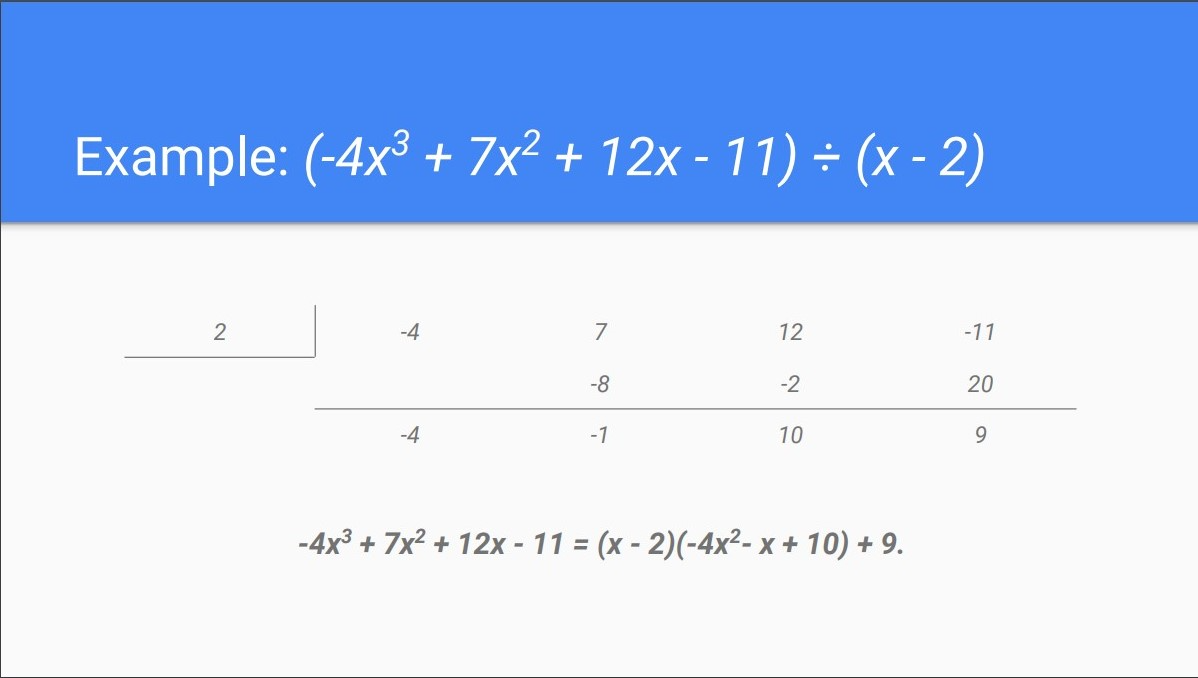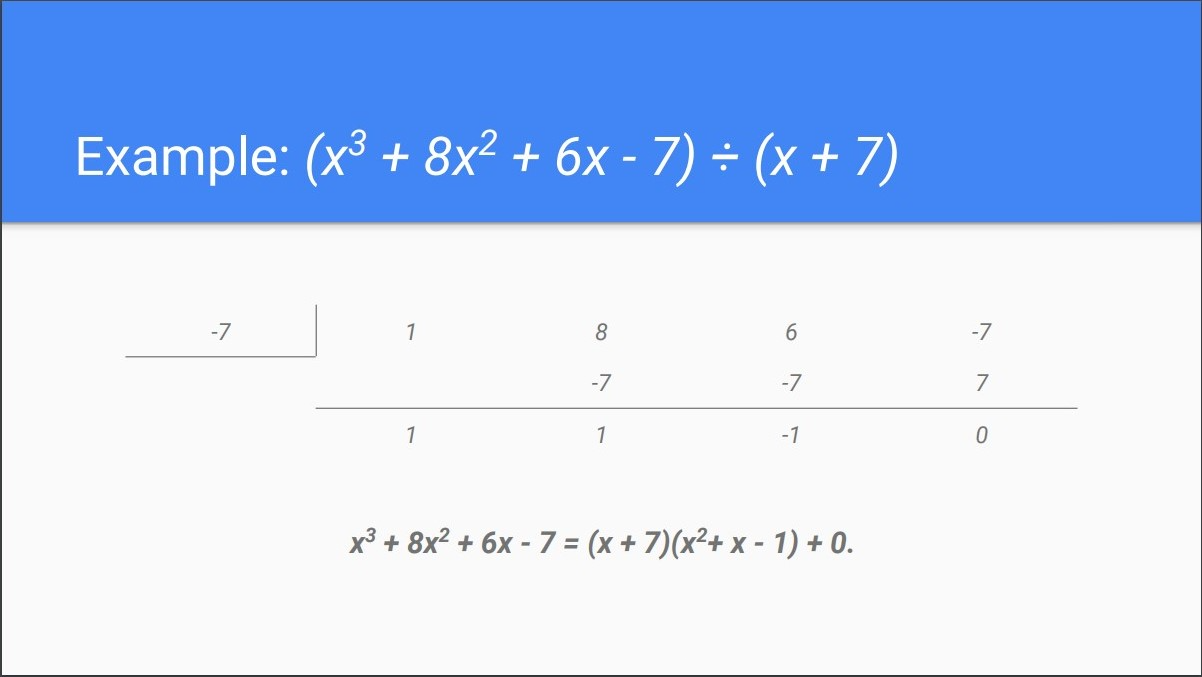Ruffini's rule
Ruffini's rule
Ruffini's rule is a shortcut method for dividing a polynomial by a linear factor of the form , which can be used in place of the standard long division algorithm. It is sometimes taken as synthetic division, but this is just a particular case.
- This method reduces the polynomial and the linear factor into a set of numeric values.
- After these values are processed, the resulting set of numeric outputs is used to construct the polynomial quotient and the polynomial remainder.
Guidelines
- Write both, dividend and divisor, in descending order according to variable’s degree.
- If a power of x is missing from the dividend, a term with that power and a zero coefficient must be inserted into the correct position in the polynomial.
- All the variables and their exponents are removed from the dividend, leaving only a list of the dividend's coefficients.
- Because only the constant term of the linear factor is necessary for Ruffini's rule, the divisor is modified into a one-term sequence (if the divisor was , rewriting as would result in a modified divisor sequence of instead).
- The first number in the dividend is put into the first position of the result area (below the horizontal line). This number is the coefficient of the term in the original dividend polynomial.
- Then this first entry in the result is multiplied by the divisor and the product is placed under the next term in the dividend.
- The number from the dividend and the result of the multiplication are added together and the sum is put in the next position on the result line.
- This process is continued for the remainder of the numbers in the dividend.
- All numbers except the last become the coefficients of the quotient polynomial. The last entry in the result list is the remainder.



References
Stover, Christopher. "Ruffini's Rule." From MathWorld--A Wolfram Web Resource, created by Eric W. Weisstein. https://mathworld.wolfram.com/RuffinisRule.html